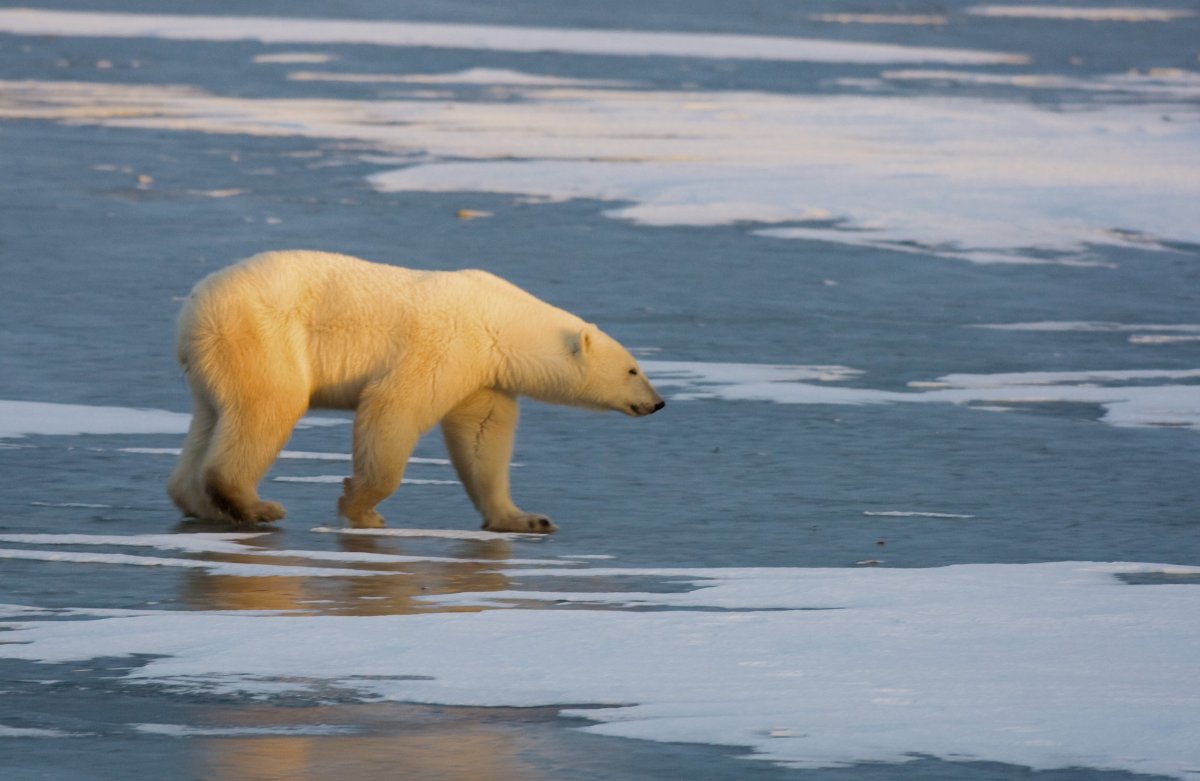
We're drowning the planet in plastic pollution, and polar bears are one of the few animals that have ever had any luck swaying popular opinion toward action on environmental issues. So perhaps it's not particularly surprising to hear that Mary Creagh, a British member of Parliament, mentioned an alleged impact of plastic on polar bears in an environmental committee hearing on plastic pollution.
That evidence was not directly presented during the committee hearing or commented upon by any of the non-profit representatives testifying during the event, it was only mentioned by Creagh. "I was speaking to a professor from the British Antarctic Survey yesterday who told me that they are seeing in the Arctic polar bears with two sets of testicles because the phthalates are leeching out from the plastic bottles in the Arctic environment and disrupting the hormones of large mammals," she said. At the time of publication, Creagh had not responded to a request for comment.
But we shouldn't be panicking about extra polar bear testicles, according to Christian Sonne, a biologist at the University of Aarhus in Denmark who has studied the impacts of chemicals on the bears. "Two sets of testicles have never been found in polar bears," Sonne wrote to Newsweek. "You can quote me on this." He adds that when it comes to the bears, he's more concerned about PCBs, a type of industrial chemical that was banned in the U.S. in 1979 but persists in the environment, than he is about phthalates, which are used to change the flexibility of plastics.
One later report from Sky News, a company that is leading an anti-plastic campaign, referenced Edward King as that scientist, but his research focuses on the use of ground-penetrating radar, primarily in the Antarctic where there are no polar bears. When asked about Creagh's statement, he did not offer any indication he agrees with it or has any evidence to support it.
There's no doubt that despite the Arctic's image of pristine remoteness, plenty of plastic makes its way up there. And even if polar bears themselves avoid directly eating pieces of plastic, they may well pick up pollution from prey that has done so. But there's no sign of extra testicles in any of the work being done on polar bears and chemical exposures.

And while plastic chemicals are definitely worth worrying about, scientists are still piecing together what precisely their impacts on polar bears may be. Sonne and his colleagues have made a point of weighing and measuring male bears' testes and penis bone as well as female bears' uterus, ovary and follicles. They have found smaller and less dense penis bones and smaller ovaries in populations that happen to also have higher exposure to a group of chemicals called organohalogens, which includes PCBs. But anatomical differences between populations are reasonably common, so it's difficult to determine precisely the impact of the chemicals. Scientists don't yet know what role the penis bone plays or whether it impacts a bear's reproductive success.
Another team of researchers found early evidence that PCBs may be affecting female bears as well, affecting levels of reproductive hormones. Other scientists have looked at how polar bears may be affected by chemicals like perfluoroalkyls, which are used in products like carpets and cardboard.
It's not good news, but at least there aren't any extra testicles in sight.
Uncommon Knowledge
Newsweek is committed to challenging conventional wisdom and finding connections in the search for common ground.
Newsweek is committed to challenging conventional wisdom and finding connections in the search for common ground.
About the writer
Meghan Bartels is a science journalist based in New York City who covers the science happening on the surface of ... Read more
To read how Newsweek uses AI as a newsroom tool, Click here.








